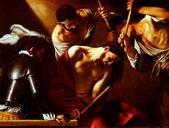Self-portrait photography is an intimate art type that invites people to explore their identities, feelings, and point of views through the lens of a video camera. It functions as a canvas for self-expression, allowing professional photographers to dig deep into their mind, exposing layers of meaning that might not be right away noticeable. This article will dissect the elaborate world of self-portrait photography, analyzing its different designs and implications while offering insights into how one can efficiently develop engaging self-portraits.
What is Self-Portrait Photography?
Self-portrait photography is the act of photographing oneself, frequently with a camera or mobile phone. Unlike traditional portraiture, which catches others, self-portraiture permits the subject to assume total control over how they are represented. This creative autonomy can cause extensive insights and special expressions that resonate with both the artist and the audience.
Historical Context of Self-Portrait Photography
The principle of self-portraiture isn't new; it has roots in classical art dating back centuries. Artists like Rembrandt and Van Gogh famously produced self-portraits to explore their identities and feelings. Nevertheless, with the arrival of modern-day innovation and social networks platforms, self-portrait photography has actually transformed considerably. Today's practitioners utilize digital tools to produce whatever from honest snapshots to meticulously crafted art pieces.
The Evolution of Self-Portrait Photography
With advances in technology, particularly in digital electronic cameras and modifying software, self-portrait photography has actually seen rapid growth. Social network platforms like Instagram have actually equalized this art kind, allowing anybody with a mobile phone to become an artist. The rise of aesthetic trends has also influenced how people approach self-portraiture, leading to brand-new categories such as faceless self-portraits and vintage visual photography.
Understanding the Layers of Meaning in Self-Portrait Photography
In comprehending the layers of meaning in self-portrait photography, we need to consider a number of measurements: emotional depth, cultural context, artistic objective, and audience perception. Each layer adds complexity to what appears on the surface-- a single photograph can evoke powerful sensations or inform intricate stories beyond what is visible.

Emotional Depth in Self-Portraits
Self-portraits typically show an individual's emotion at a particular moment. Photographers might intend to catch feelings like delight, sadness, isolation, or empowerment through their images. The option of setting, lighting, color design, and body movement all contribute to conveying these feelings effectively.
Cultural Context and Identity Exploration
Cultural background plays a considerable role in shaping how people view themselves and want to provide themselves through photography. For instance, somebody from a collectivist culture might stress familial ties or community connections in their pictures while a specific from an individualistic society may focus more on individual accomplishments or solitary experiences.
Artistic Objective Behind Self-Portraits
Every professional photographer approaches their deal with specific objectives-- be it commentary on societal issues or individual exploration. By examining these inspirations behind each image's production process-- such as choice of props or areas-- we can much better value the artistry involved in crafting meaningful photographs.
Viewer Understanding: The Function of Audience Interpretation
Once shared publicly-- whether on social networks or in galleries-- self-portraits take on brand-new significances as viewers analyze them through their own lenses formed by individual experiences. Comprehending this dynamic interaction between creator intent versus audience perception is crucial for understanding much deeper layers within any photograph.
Types of Self-Portrait Photography Styles
Self-portrait photography incorporates various designs that deal with various artistic visions and psychological expressions. Let's explore some popular types:
Fine Art Self-Portrait Photography
Fine art self-portraits prioritize visual appeals over traditional representation-- the objective here is not simply catching a likeness however creating something visually striking that stimulates feeling or thought.
Characteristics of Fine Art Self-Portraits
Artistic Structure: Use of components such as light, shadow, color palettes. Conceptual Depth: Typically includes styles like death or identity. Emotional Resonance: Aims for connection with audiences on much deeper levels than mere appearance.Aesthetic Self-Portrait Photography
Aesthetic self-portraits are everything about beauty; they often adhere closely to present visual patterns while showcasing creativity through styling choices-- from wardrobe choices to post-processing methods utilized throughout modifying phases.
Key Elements
Styling Options: Clothing that lines up with present trends (e.g., classic visual). Color Grading Strategies: Constant color schemes enhance total visual appeal. Composition Techniques: Making use of balance and balance produces pleasing visuals.Contemplative Photography: A Deeper Reflection
Contemplative photography motivates mindfulness throughout shooting sessions-- it focuses less on technical perfection however rather cultivates awareness about environments & & emotions while recording images spontaneously without preconceived notions.
Benefits
Mindfulness Practice: Improves mental wellness by concentrating far from day-to-day stressors. Authenticity: Results typically yield unfiltered moments showing true sensations rather than contrived poses.Faceless Self-Portraits: Exploring Anonymity
Faceless self-portraits permit artists privacy-- they invite audiences into individual areas without revealing identities straight; they provoke interest regarding what lies beneath surface-level appearances.
Why Pick Faceless Portraits?
Privacy Conservation: Maintains borders while still sharing parts of oneself. Universal Themes: Concentrate on broader concerns rather than specific narratives which can resonate extensively across audiences.Techniques for Developing Engaging Self-Portraits
Creating impactful self-portraits requires more than https://innervista597.raidersfanteamshop.com/artistic-prints-as-essential-elements-of-sophisticated-interiors simply pointing and shooting; it involves strategic preparation combined with spontaneity! Here are some necessary strategies:
Lighting Techniques for Significant Effects
Lighting can considerably alter state of mind within photos-- explore natural versus synthetic source of lights yields varied results ranging from ethereal glows during golden hour sunshine versus stark contrasts discovered under extreme fluorescent bulbs!

Tips for Effective Lighting
Utilize Golden Hour Light whenever possible. Experiment with Shadows artistically by adjusting angles/directions. 3. Consider Using Reflectors/Diffusers when working indoors/outdoors alike!Composition Methods That Captivate Audiences' Attention
Effective structure guides viewers' eyes throughout images making sure focal points draw attention where intended! Utilizing guidelines such as Rule Of Thirds helps keep balance within frames making them visually engaging overall!
Helpful Composition Techniques
1. Apply Rule Of Thirds by dividing frame into grid sections putting subjects accordingly! 2. Develop Framing Devices making use of doorways/windows/branches confining central figures including depth! 3. Differ Perspectives incorporating wide-angle shots contrasting close-ups improving storytelling elements visually!
Editing Tips for Improved Aesthetics
Post-processing enhances raw captures changing them into refined works prepared for display! Comprehending basic editing principles aids achieving wanted looks when completing images before showcasing publicly!
Popular Modifying Tools Available Today
Several easy to use applications cater novice professional photographers seeking improvement without overwhelming intricacy associated professional-grade software readily available today! Some noteworthy alternatives include:

|Tool Call |Functions || -------------|----------------|| Adobe Lightroom|Advanced color grading capabilities|| VSCO |Filters simulating movie impacts|| Snapseed |Easy to use user interface best beginners|
Exploring Styles Through Aesthetic Photos
Themes play essential functions driving compositions behind effective aesthetic image collections portraying narratives reflecting special viewpoints lined up artistic visions exposed through thoughtful plans caught moments!
Exploring Common Themes In Aesthetic Portraits
1. Identity Expedition highlighting variety among cultures/styles contributing richness visual storytelling! 2. Mental Health Awareness attending to stigma surrounding mental disorder encouraging open conversations through images! 3. Environmental Connection highlighting nature's beauty inspiring preservation efforts globally!
Frequently Asked Questions (Frequently asked questions)
What Is Reflective Photography?
Contemplative photography emphasizes mindfulness during shooting sessions fostering awareness about environments & & emotional states while recording spontaneous moments reflecting true feelings instead of contrived poses!
How Can I Start With Self-Portrait Photography?
Begin by experimenting with your environment utilizing smartphones/cameras focusing on various angles/lights checking out emotions/themes you want communicate eventually fine-tuning technique through practice over time!
What Are Faceless Self-Portraits?
These represent confidential images allowing artists share parts themselves without exposing identities straight welcoming interest regarding underlying narratives portrayed within frames!
How Do I Make My Aesthetic Images Stand Out?
Focus on special styling options consistent color grading boosting overall visual appeal employing different structure techniques guaranteeing fascinating audience engagement throughout imagery presented online/offline alike!
Why Is Lighting Important In Portrait Photography?
Lighting considerably changes mood influencing understandings drawn forth from caught scenes enhancing storytelling elements directing viewers' eyes towards centerpieces effectively creating interesting structures overall!
What Devices Do I Need To Get Started With Art Self-Portrait Photography?
While advanced gear supplies advantages starting out doesn't need high-end equipment; even smartphones equipped decent cams suffice initially till skills establish further leading expedition advanced methods later on stages journey!
Conclusion
In conclusion,"Understanding The Layers Of Significance In Self Portrait Photography" exposes an elaborate tapestry woven together by feelings, culture, and artistry.Combining these components enables professional photographers craft powerful narratives through thoughtful compositions stimulating connections audiences worldwide.Ultimately, this art form acts as both mirror reflection offering insight into one's identity while all at once fostering dialogue around wider themes.Self pictures continue progress expanding horizons possibilities available creators today reminding us value accepting vulnerability sincerity throughout creative processes!